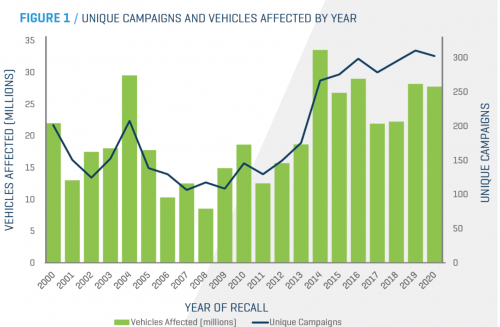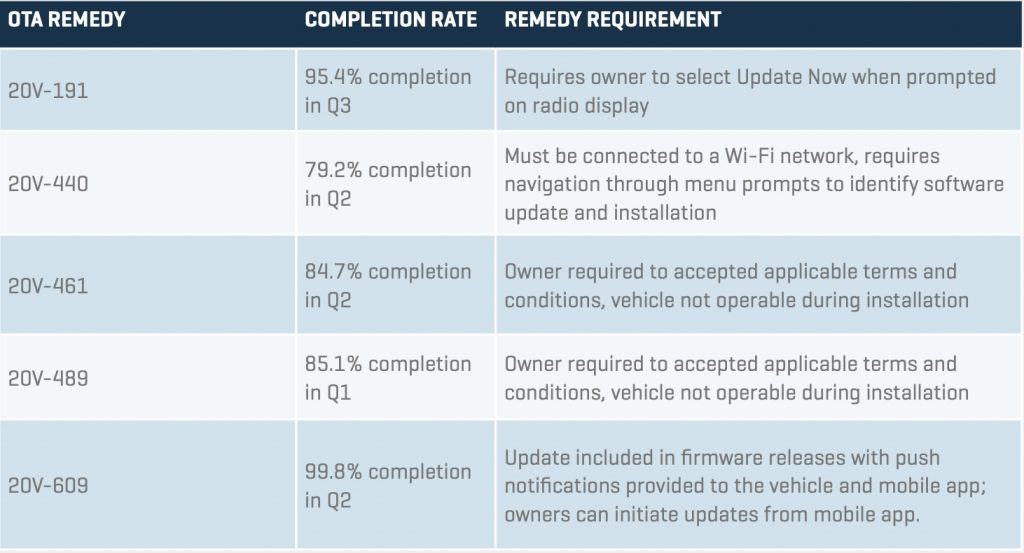What
As more innovation and regulation is software related, Stout’s 2021 Automotive Defect & Recall Report is reporting a growth in software recalls and TSBs. This drives the question: Is it time to embrace a proactive approach to software quality management?
Why should you read this?
- We highlight the main trends from Stout’s 2021 report
- We analyze how the trends will affect the industry as a whole
- We reflect on the industry disruptions caused by COVID-19
- The Stout report points out that OTA updates increase completion rates, and we suggest how we can raise this number even further.
Key Trends and Highlights
- The year 2020 was unique for the automotive industry in many ways. This exponential growth in technology has brought new capabilities to the automotive industry, though plant closures and global supply chain disruptions the COVID-19 pandemic caused contributed to the lowest volume of new vehicle sales since 2012. However, the number of unique recalls campaigns has nearly trebled in the past ten years. The number of vehicles affected by recalls remained close to peak levels through a tumultuous time for the industry.
- Meanwhile, the development and implementation of innovative and convenient OTA update solutions enable OEMs to prevent recalls, make updates convenient to complete for owners, increase completion rates and lower the total costs of the recalls both to OEMs and suppliers.
Report highlights:
- In a rapidly evolving industry, software defects can lead to significant risk exposure. By 2022, we expect most vehicles will be connected and controlled by software systems.
- The proportion of software-based defects increased for the fourth consecutive year.
- There are greater uncertainties for future recalls as complex safety-critical systems are integrated into new vehicle platforms.
- A decline in recall completion percentages, due in part to mobility restrictions and other industry disruptions related to COVID-19
- However, 2020 recalls utilizing OTA remedy delivery have achieved high completion percentages by most measures. Still, the disparity in completion progress in these recalls reveal that barriers to completion remain, namely, the more transparent the update to the user, the less the user is required to be a part of the process, and the higher the completion rate.
- Aurora Labs’ Auto Update uses an additive update technology to write the OTA update file to the next free space on the ECU flash, removing the need for dual memory banks and enabling seamless and transparent software updates.
- According to the 2021 Automotive Software Survey, the ability to perform predictive maintenance on automotive software is a desired capability within the industry. Based on the survey, more than 93 percent of the respondents think the ability to predict software anomalies is important or very important.
- Aurora Labs’ Auto Detect continuously monitors the ECU software for deviations in the functional behavior. Using AI algorithms, Auto Detect can predict which deviations can potentially lead to a system failure, enabling proactive software maintenance.
Even though the current recall rate of this industry is high, many are expecting it to dip. The report suggests that with the increasing number of OTA software updates, cars could soon be serviced remotely instead of recalled. The report also makes it clear that now would be a good time for those in the auto industry to rethink their approach to software updates and invest in solutions that can bring a software development process to the next level.









 5 min read
5 min read